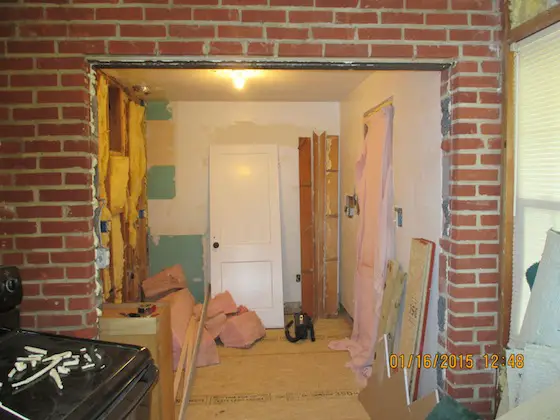Steel Brick Lintel Design
Rick Castelli is doing some remodeling in his Falls Church, VA home. Let him give you the background about the masonry opening.
"We have a 1947 Cape Cod with masonry walls. The picture shows the old rear exterior wall where a previous owner removed a back door and window in the kitchen to open up into an addition.
Here's Rick's brick opening. Photo credit: Rick Castelli
The opening is 69" length x 8 1/4" thick. It's reinforced by two adjoining angle iron lintels that extend into the masonry 6" on each side, and each lintel is 1/4" thick x 3.5" wide. I calculated the static load of masonry and roof rafters (no live load) and doubled it to 660 lbs. to account for the fudge factor.
Should I insert a support post where there was a king/jack stud before, or is there nothing to worry about as is?"
Here's my answer.
Rick, if the builder / mason and architect did their jobs right back nearly seventy years ago - and I think they did based on the photo - you've got nothing to worry about.
The steel lintels are designed to hold the load of a brick triangle that steps in from each top corner of the masonry opening. Does that make sense?
I see seven full brick on the first row of the steel lintel. Those can be removed, then the six above them in the next row, then the five above those in the third row until you remove the single brick creating the triangle. All the weight above is transferred to the bearing points where the steel lintels are resting now.
The fact that you have no cracks in the masonry above the opening is also a great clue that the design is solid.
